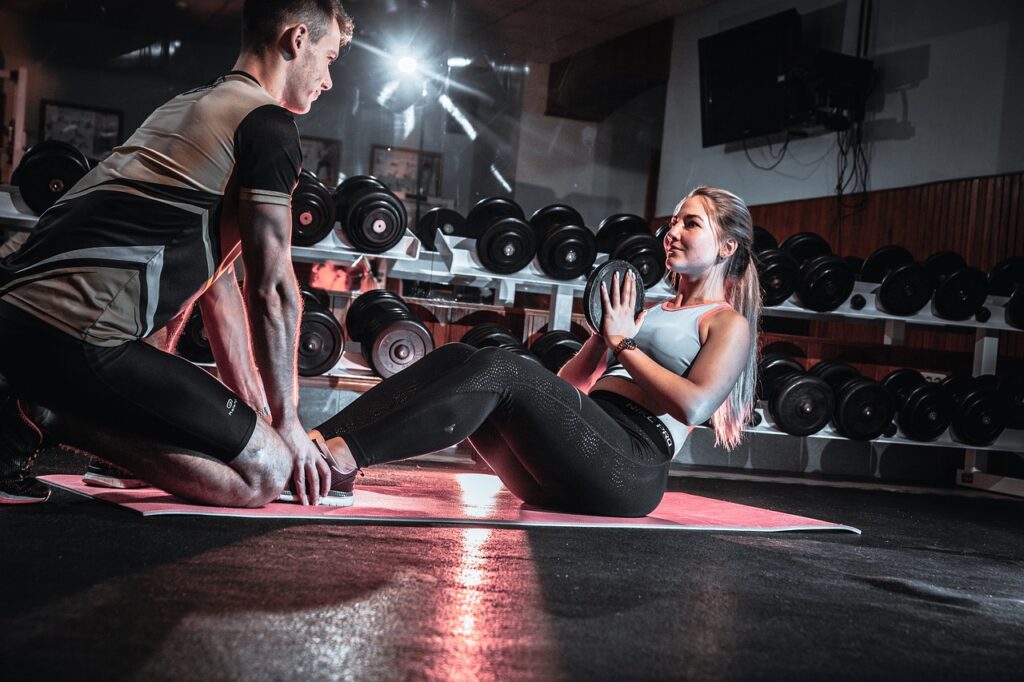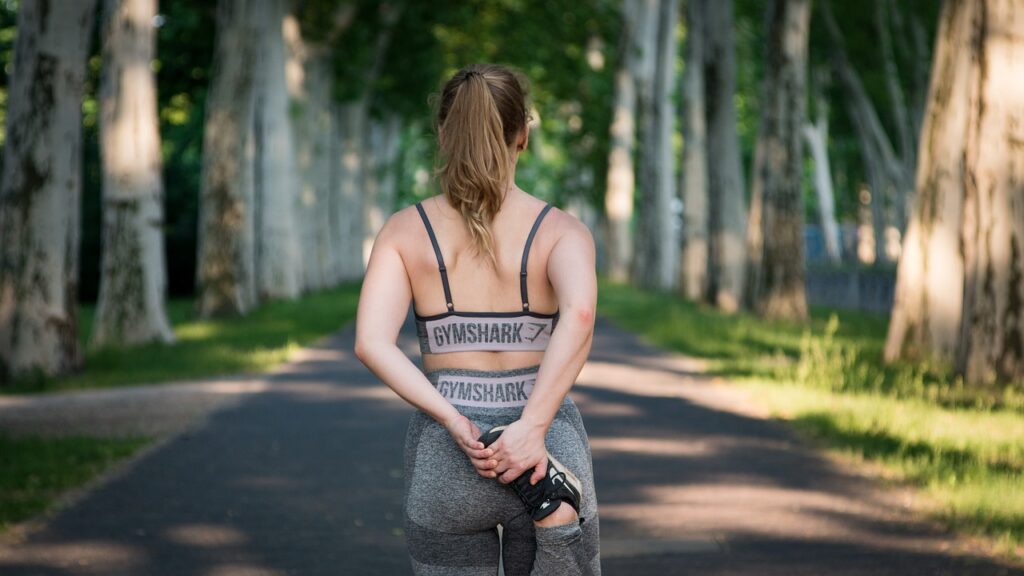Exercise Bikes vs Treadmills: How To Choose the Best Cardio Machine for Your Home Gym
Setting up a home gym starts with investing in solid cardio equipment that fits your space, training preferences and fitness objectives. Two of the most popular options for indoor cardio training are exercise bikes and treadmills. But should you choose a bike or a treadmill for your home gym?
Both pieces of equipment enable you to get your heart rate up while burning calories and strengthening your lower body. However, there are some key differences between stationary bikes versus treadmills when it comes to low-impact training, muscle targeting, calories burned and space requirements.
To help you decide which makes more sense for your home, here is an in-depth comparison of the unique pros and cons of exercise bikes versus treadmills.

Benefits of Indoor Exercise Bikes
Stationary bikes offer effective, low-impact cardio training for all ages and fitness levels. Here are some of the biggest advantages of exercise bikes for home use:
Low-Impact for Joints Cycling involves smooth rotational movement with your weight supported by the seat. This makes bikes a joint-friendly option for cardio compared to the constant pounding of running. It allows you stay active without stressing your knees, hips and other sensitive areas.
Tones Lower Body Muscles The pedaling motion leading with the quads effectively works your glutes, hamstrings and calf muscles. This helps shape, tone and strengthen your lower body. Some bikes also incorporate arm levers or handles to provide a more complete upper body workout.
Adjustable Resistance Exercise bikes allow you to modify resistance levels to make your workout easier or more challenging. Most offer tension knobs, resistance buttons or lever to increase the difficulty for more intense cardio sessions and intervals.
Enable Cardio and Strength Training In addition to steady state cardio, bikes can be used for interval and strength training by cranking up resistance and standing to engage more muscles. The adjustable intensity makes bikes ideal for HIIT and tabata workouts.
Compact Footprint Exercise bikes have a relatively compact footprint, especially upright bikes. They can easily fit into a corner or against a wall. And many models are equipped with wheels for maneuverability as needed. This makes them ideal for small spaces.

Benefits of Home Treadmills
Treadmills are the most versatile cardio machine, enabling you to walk, jog, run and sprint. Here are some of the main advantages of treadmills:
Accommodate Different Exercise Types Most treadmills reach top speeds of at least 10 MPH, allowing the capacity to walk, jog, run or do interval sprints. This makes them more dynamic than bikes. The belt surface is also shock-absorbing to reduce pounding.
Burn More Calories
Running on a treadmill generally burns more calories than using an exercise bike, especially at faster paces. The larger muscle groups engaged and weight bearing nature of treadmills ramps up calorie burn.
Incline Feature Treadmills allow you to simulate hill climbing by adjusting incline levels up to 15% grade. Increasing the incline recruits more muscle fibers, intensifies cardio and burns extra calories. This adds versatility.
Engage More Muscles While cycling primarily targets the lower body, treadmills provide a more complete workout by engaging your glutes, quads, hamstrings, calves and engaging the arms and core to maintain upright posture.
Natural Movement
The motion of treadmill walking or running mimics outdoor exercise and uses normal biomechanics. This feels more natural for many versus the rotation of cycling.
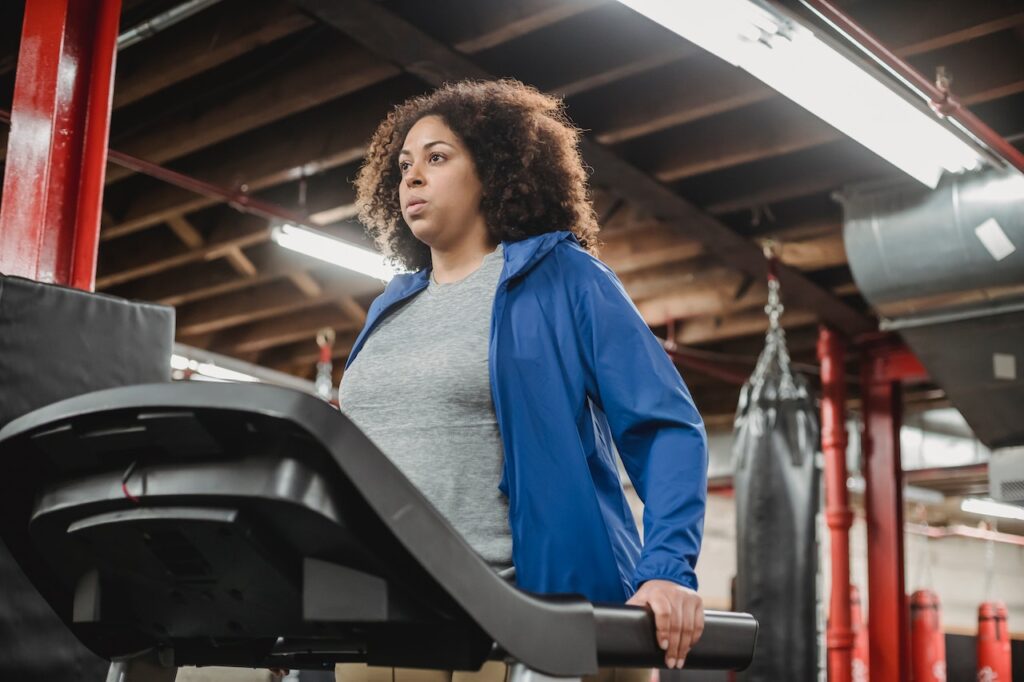
Potential Downsides of Indoor Cycling
While beneficial in many ways, exercise bikes do come with some disadvantages to consider:
Focus on Lower Body Cycling mainly works the lower body while neglecting the upper body. Without incorporating the arm levers, bikes don’t provide a complete muscle training solution. This can lead to imbalance or neglect of your arms, back and shoulders.
Less Calories Burned Stationary cycling burns fewer calories than running at the same perceived level of exertion. Part of this has to do with more muscles being used while running versus sitting while cycling. Your weight is also supported on the bike seat while running is weight-bearing.
Can Be Monotonous Pedaling smoothly on a stationary bike in a fixed position may get monotonous and boring over time, especially for high levels of cardio. The lack of variation and seated position limits entertainment value for some people.
Not for HIIT Running While exercise bikes allow for interval training, treadmills are better suited for high-intensity interval training that incorporates very high speeds like sprinting. Bikes lack ability to simulate running or other upright explosive movements.
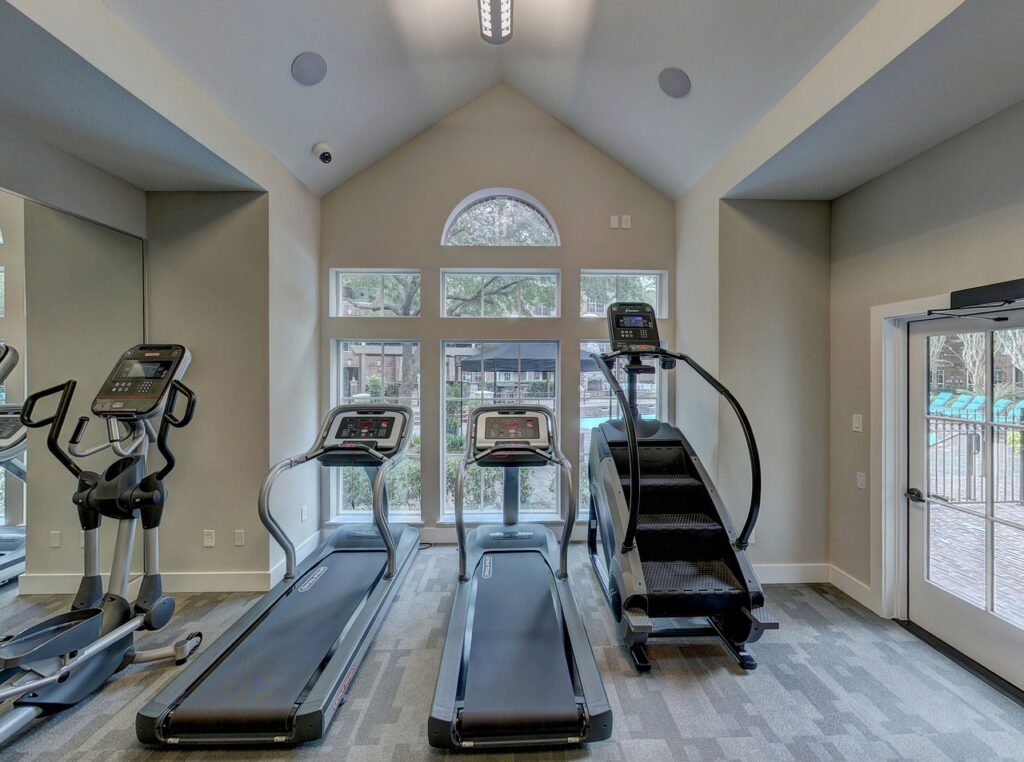
Potential Downsides of Treadmills
Treadmills also come with some drawbacks as outlined below:
Higher Impact on Joints: The constant pounding involved with walking and running on a treadmill brings greater impact on hip, knee and ankle joints versus low-impact cycling. For those prone to joint pain, bikes provide a gentler alternative.
Require More Space: Treadmills need more clear floor space than bikes, especially the length required for running stride. Plan for at least 2-3 feet on each side and 6-8 feet behind the machine, or more if housed in a tight corner.
Maintenance: Treadmills require periodic lubrication of the belt and deck plus tension adjustment. This involves removing the motor cover. Exercise bikes are generally lower maintenance with no moving belt.
Less Stable Strength Surface: The smooth moving belt of a treadmill creates an unstable surface for strength exercises or using weights. Bikes often have a solid stationary surface better suited for cross-training.
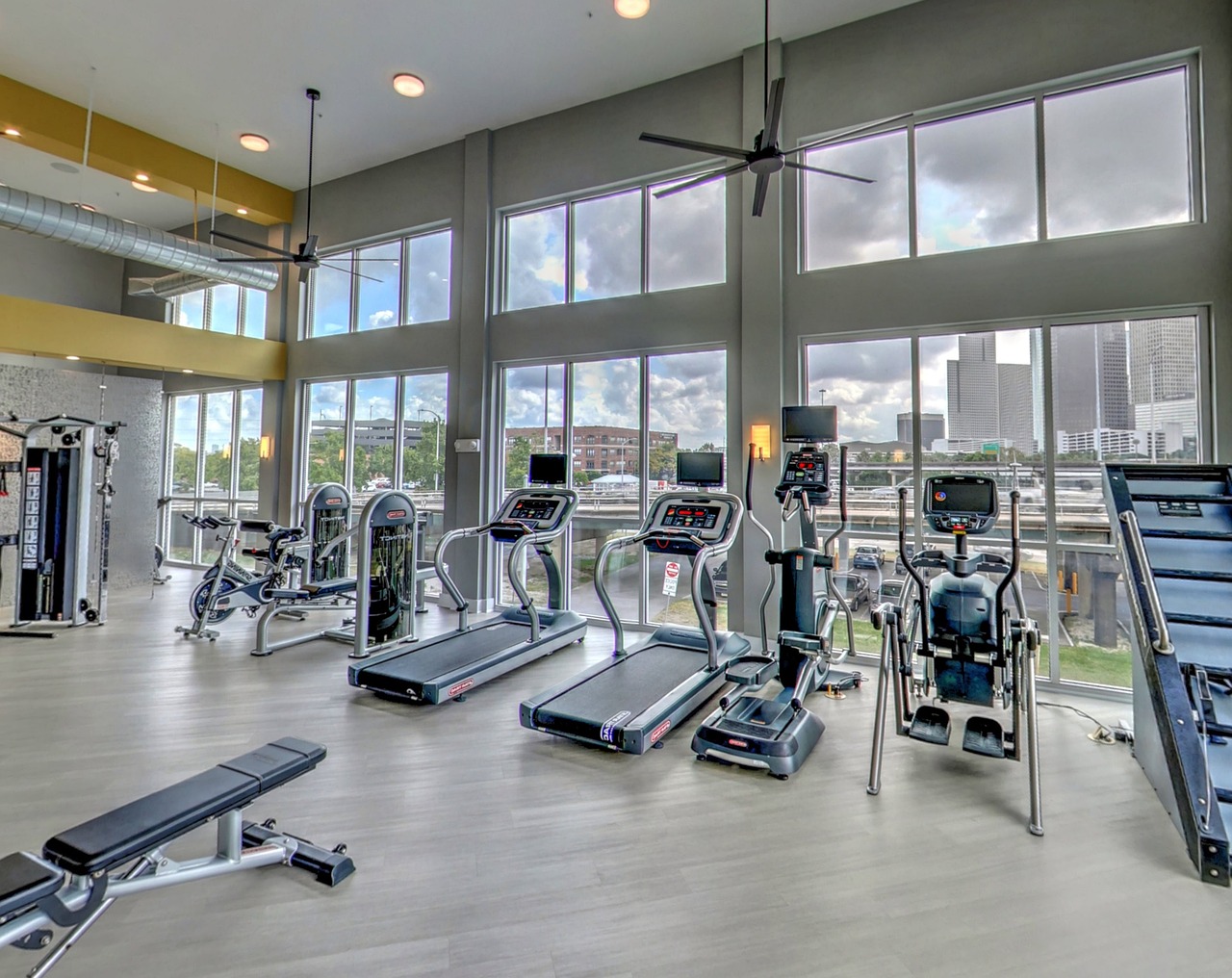
Finding the Best Leggings for Exercise Biking and Treadmill Runs
Whether you are churning away on an exercise bike or logging miles on the treadmill, wearing the right leggings makes all the difference in comfort and performance. Leggings are the ideal choice for cardio machines thanks to their stretchy, breathable fabrics and body-hugging fit.
But not all leggings are suited for the demands of indoor cycling or treadmill running. Here are the factors to look for when shopping for leggings to withstand your sweat sessions on bikes and treadmills:
Fabrics with Enough Stretch and Recovery
The number one priority in exercise leggings is a fabric with plenty of stretch and recovery. When cycling or running, your legs are constantly moving through a wide range of motion. Leggings need to flex and bend with your body throughout the movement.
Look for leggings containing a high percentage of spandex, typically 15-25%. Quality blends like spandex with nylon and polyester provide four-way stretch. The leggings should feel snug when stationary then comfortably stretch as you move actively without restriction.
Moisture Wicking to Keep Cool and Dry
As your workout intensity increases, sweat production ramps up. Leggings made from moisture-wicking technical fabrics keep you cool and dry by pulling sweat away from your skin so it can evaporate quickly. This prevents both overheating and the irritation and chafing caused by wet fabrics.
Natural fibers like cotton tend to absorb and hold onto moisture rather than wicking it away. Look for leggings incorporating moisture-wicking synthetic fabrics like polyester, nylon and spandex for spin and treadmill sessions. Darker dyes can also conceal embarrassing sweat spots.
Mid to High-Rise Waistband Styles
A mid to high-rise waistband on leggings will stay put no matter how vigorously you sprint on the treadmill or pedal during a climb on your bike. Styles with waistbands that hit right at your natural waist or slightly above prevent any peek of skin as you move.
Lower rise leggings or anything that sits below your navel can be problematic as shorts can roll down or expose your lower back. Opt for a 7 to 9 inch rise measurement for adequate coverage and security.
Flatlock Seams to Eliminate Chafing
The seams on leggings get a lot of friction during vigorous cycling or running. Flatlock seams provide a smooth, flat finish that helps minimize rubbing and chafing on your inner thighs or behind your knees. Other chafing-prone spots are the waistband and leg openings.
Or opt for high-end leggings using seamless technology for the ultimate chafe-free wear. Just be sure to wash seamless leggings gently to help maintain their sleek finish over time.
Ventilation Zones for Breathability
Ventilation is crucial when building up a sweat, so look for leggings designed with breathability in mind. Strategically placed mesh panels along the calves, behind the knees or near the ankles offer enhanced air flow. This allows heat to escape and cooler air to circulate.
Moisture-wicking technical fabrics also improve ventilation and airflow versus cotton styles that cling when damp. Visible sweat marks on leggings can also cool you through evaporation.
Adequate Compression Without Constriction
Compression improves blood flow and circulation during demanding cardio sessions. Leggings offering moderate compression support your muscles while improving stamina. This allows you to bike or run longer with less fatigue.
That said, compression should not be so tight that it inhibits your movement. The leggings should fit snugly but not dig in, pinch or restrict your mobility in any way. Look for compression ratings of around 20-30 mmHg in the most strenuous sections like the calves.
Extended Sizing for All Body Types
Finding properly fitted leggings for your unique proportions ensures the waistband sits right and the length accommodates your legs. Extended sizing like short, regular and long lengths prevents leggings from bunching at the ankle or exposing your ankle during treadmill inclines.
Size charts listing actual garment measurements make it easy to select the ideal fit. Some brands also offer waistband adjustable toggles or drawstrings for further dialing in the perfect custom fit.

Choosing the Best Option for Your Home Gym
Now that you’re familiar with the pros and cons of each type of cardio machine, deciding whether an exercise bike or treadmill better matches your home gym needs involves considering:
- Your fitness goals and preferred types of exercise and cardio
- Any current or past orthopedic injuries that need accommodating
- Available space in your home, garage or apartment
- Noise constraints in attached housing situations
- Your budget and any deals available on desired models
If your focus is mainly on low impact cardio for joint health or you have minimal space, an exercise bike likely makes the most sense. The ability to walk, jog or run comfortably may be a priority that makes a treadmill the better choice.
Think about which activity you’d realistically enjoy and stick with long term. Try out both machines at the gym if possible before purchasing. And be sure to accurately measure your space to ensure your chosen cardio machine fits properly with room to safely mount and dismount.
With thedetailed comparison above of the advantages and disadvantages of each type of equipment, you should feel confident choosing the superior cardio machine for your unique home fitness needs and goals. Just be sure to also invest in additional strength training equipment to create a balanced home gym setup.

